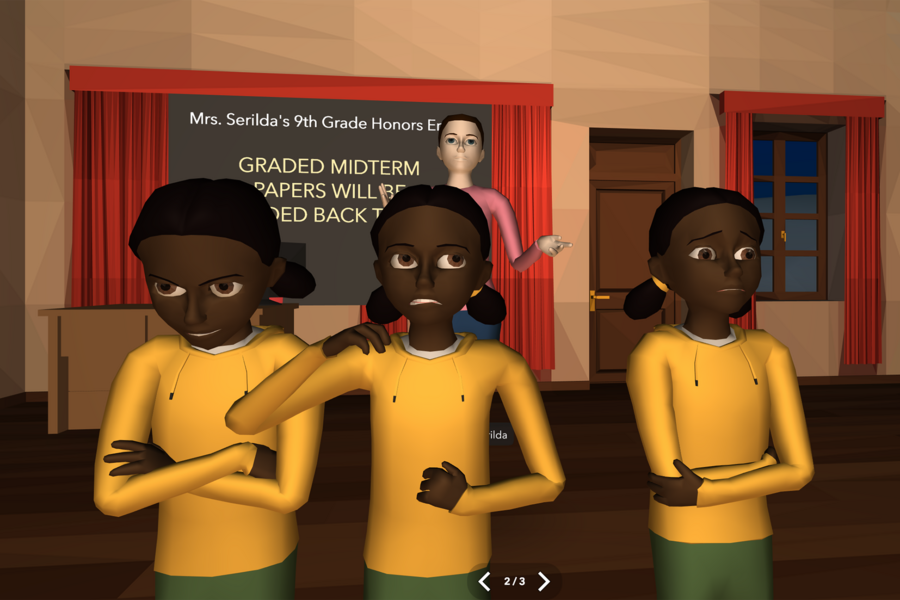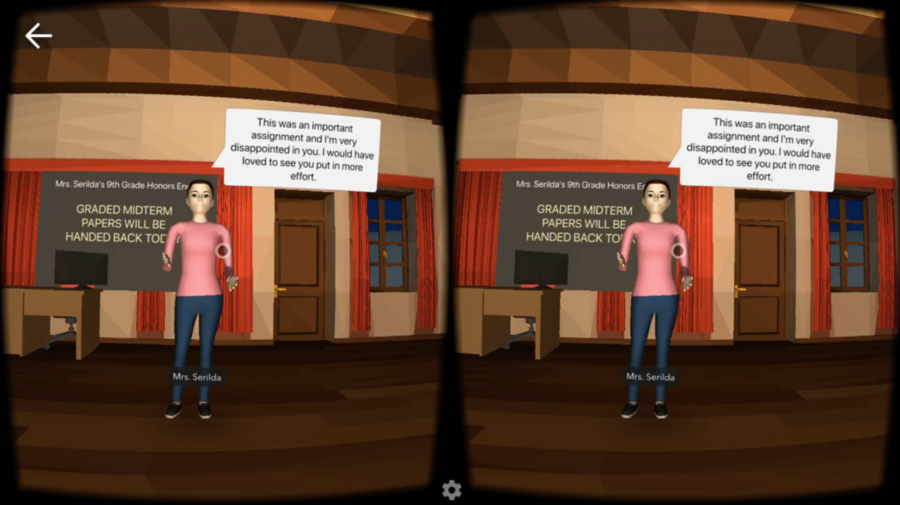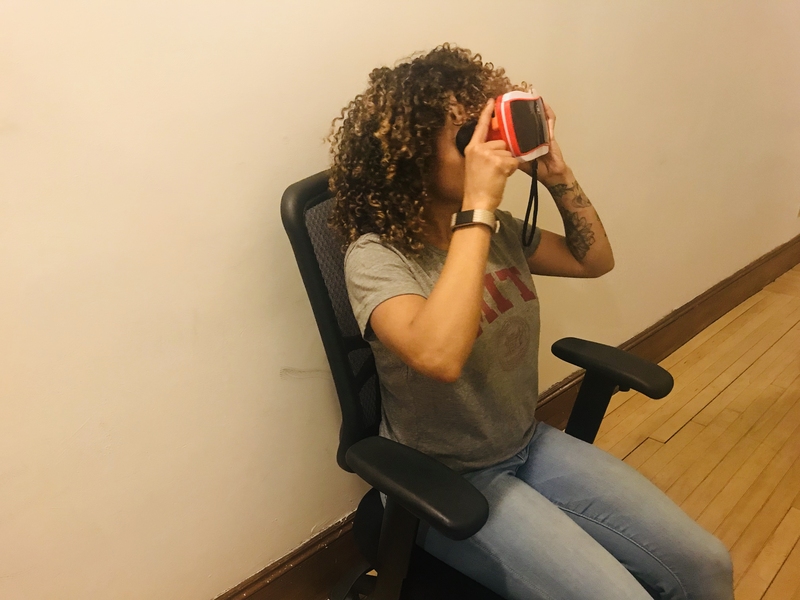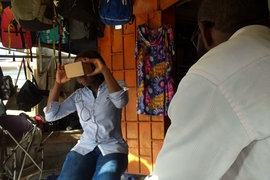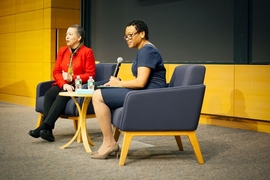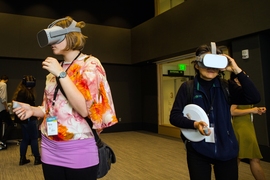Video games that use virtual reality to create immersive experiences have become increasingly popular for entertainment and for research. However, the representation of race in these simulations is often shallow — and fails to go beyond physical appearance attributes like skin color.
For a more lived, embodied experience in the virtual world, MIT researchers have developed a new computational model that captures how individuals might have been taught to think about race in their upbringing. The new model of racial and ethnic socialization, presented at the AAAI 2019 Spring Symposium, has the potential to not only enhance video game simulations, but also to facilitate training for teachers and students who might encounter racial issues in the classroom.
“As video game developers, we have the ability within virtual worlds to challenge the biased ideologies that exist in the physical world, rather than continue replicating them,” says Danielle Olson, a PhD student in the Computer Science and Artificial Intelligence Laboratory (CSAIL) at MIT, whose dissertation project includes the work reported at the symposium. “My hope is that this work can be a catalyst for dialogue and reflection by teachers, parents, and students in better understanding the devastating social-emotional, academic, and health impacts of racialized encounters and race-based traumatic stress.”
“People are socialized to think about race in a variety of ways — some parents teach their children to ignore race entirely, while others promote an alertness to racial discrimination or cultural pride,” says D. Fox Harrell, professor of digital media and of artificial intelligence and director of the MIT Center for Advanced Virtuality, where he designs virtual technologies to stimulate social change. “The system we’ve developed captures this socialization, and we hope that it may become an effective tool for training people to be thinking more about racial issues, perhaps for teachers and students to minimize discrimination in the classroom.”
Olson and Harrell embedded their new model into a virtual reality software prototype, "Passage Home VR," and conducted user testing to understand the game’s effectiveness.
"Passage Home VR" serves up an immersive story, grounded in social science work conducted in the physical world on how parents socialize their children to think about race and ethnicity, both verbally and nonverbally, and the impact on how individuals perceive and cope with racial stressors.
In the game, the user assumes the virtual identity of an African American girl whose high school teacher has accused her of plagiarizing an essay when, in fact, the character is a passionate, high-achieving English student who took the assignment very seriously and wrote the essay herself.
As users navigate the discriminatory encounter with the teacher, the ways in which they respond to the teacher’s actions — with different body language, verbal responses and more — influence the outcome and feedback presented at the end of the game.
Overall, the results of the study suggest that the experiences people have in their lives with how they have been socialized to think about the role of race and ethnicity in society — their racial and ethnic socialization — influence their behavior in the game.
Of the 17 participants in the study who tested out the game, most were identified as “colorblind” by the game, which was also confirmed through semi-structured verbal interviews conducted following the game. Colorblind users were also less likely to explicitly mention race in their thematic analyses of the story in the game. A smaller number of users displayed in-game behavior that identified them as having other socialization strategies, such as “alertness to discrimination” or “preparation for bias.”
“The game choices were aligned with their real-world socialization of these issues,” Harrell says.
This feedback for users may be a powerful training tool — serving as an assessment of how prepared people are to think about and respond to racial issues.
Harrell added that his lab is now preparing to deploy and study the efficacy of "Passage Home VR" as a professional development tool for teachers.
“Learning with virtual reality can only be effective if we present robust simulations that capture experiences as close to the real-world as possible,” Harrell said. “Our hope is that this work can help developers to make their simulations much richer, unlocking the power to address social issues.”
